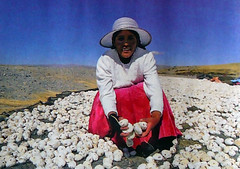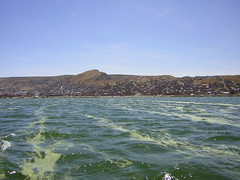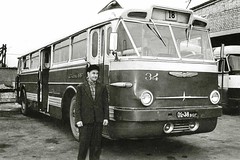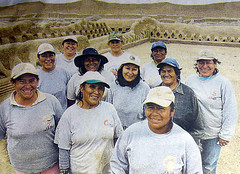Carnavales

Carnaval in Lima (Andina/Cornejo)
February is over, it is finally safe to come out of hiding and explain how carnival is celebrated in Peru. While Brazilians are building floats and flailing around, most Peruvians have to look over their shoulders. I have to mention Brazil because to most foreigners, the word carnival is synonymous with Peru’s largest neighbour. It may come as a surprise to many though that carnival is a big deal in Peru too – in fact, the next biggest and best carnival experience in the Americas is hosted in the north of the Andean country, in beautiful Cajamarca. Here the hugely anticipated event is the local population’s reason for being – and you can’t blame them, read about it here.
But the history of carnaval in Peru beings in Lima.
During the early colonial period, there was little mention of the event brought from Europe by the Spaniards. In the 1500s and 1600s Lima was awash with costume parties, dancing and social events, perhaps this was the reason why little was written specifically about carnaval – it probably passed by unnoticed.

1800s
The first specific mention of carnaval was in the late 1700s when the viceroy of Peru declared “games with water” illegal, especially illegal among citizens and slaves. In this time, drenching others with water was the customary way celebrate and the population of the colonial city would run around the streets carrying mud pots of perfumed water to throw at each other. Completely indecent according to the Spanish Governors of the colony. The law, like many today, was completely ignored, and the games continued year after year.
In the 1800s, carnival traditionally started at midday on the first Sunday of February, lasting for three days. The city was shut down during these three days and anyone venturing out onto the street would not remain dry for long.
Running battles would take place between the gentlemen in the street, and between those in the street and the women in the balconies. The sounds of laughter and screaming could be heard across the city.

Early 1900s
Typical weapons of choice for those women on the balconies were any type of pot they could find and fill with water. They would be stocked up and waiting for unsuspecting passers by. On the streets, men would carry hollowed eggs filled with perfumed water and sealed with wax – there were no plastic balloons in those days!
Throughout the three days of celebration, people would make sure to wear old clothes they wouldn’t mind getting wet – there was no option not to participate. Parties were held in the evenings, well-to-do families would celebrate with dancing and costumes, while the poor would enjoy traditional music in the local peñas.
Flash forward to 2009.
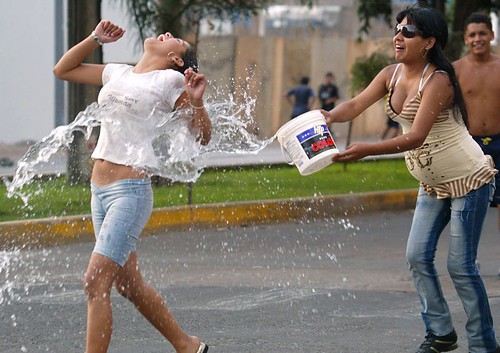
Carnaval in Lima (Andina/Grandez)

Carnaval in Lima (Andina/Grandez)
Today, for the middle and upper classes, the celebrations have fallen out of fashion, though middle class children will play in the streets with water balloons, targeting unsuspecting strangers and friends alike. Times are tough for these kids though as little of this tolerated, gone are the days of laughing and screaming.
In the poorer districts, but those of local Limeño descendency, the party never ended and the games go on with the same ferocity as they did centuries ago. Banished though is the three day rule – here you must look over your shoulder for an entire month. In fact, be wary even at the end of January.
Perfumed water has fallen out of fashion with the lower classes who still take carnaval seriously, instead they like to mix either paint or mud into the water. But with the hot summer sun beaming down onto the potholed streets, even that can be a welcome relief. Drenched and dirty, everyone is out enjoying themselves, laughter and squeals are heard clearly over the loud music blasting onto the streets, while those who have already met their watery fate enjoy a few bears and maybe a dip in the cheap plastic pool.
Carnaval in the Barrio (videos)
Tags: 1800s, 1900s, carnival, la victoria, lima, surquillo, traditions






